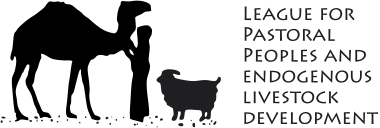White gold of the desert

Conserving animal biodiversity and creating rural employment can go hand in hand – an Indian NGO is showing the way.
Camels are part of the past? Not according to Lokhit Pashu-Palak Sansthan, a Rajasthan-based NGO and LPP partner.
The Indian NGO is running a project to boost the value of camel products such as milk and ice cream. Camel milk, the “white gold of the desert”, is highly nutritious and is used traditionally to treat tuberculosis and typhoid. According to scientists, it may also have a positive effect on patients with HIV/AIDS, cancer and Alzheimer’s disease.
Further details 63 kb
Livestock Keepers and the Management of Animal Genetic Resources: Roles, Rights, and Responsibilities

Pastoralists and other livestock keepers should have the right to participate in formulating national policies. That was one of the conclusions of a workshop on Pastoralists, Livestock Keepers Rights and Animal Genetic Resources, on 24 to 26 February 2007.
Around 100 pastoralists from all over India attended the workshop in Sadri, Rajasthan, along with delegations from Mongolia, Iran and the Philippines.
The workshop also demanded official recognition for pastoralists as custodians of animal genetic resources. Their mobile way of life and their traditional rights to use forest lands and other natural resources must be protected, said participants.
An international meeting followed immediately after the national workshop. Participants from Bangladesh, China, Germany, India, Iran, Mongolia, Sri Lanka, Sudan, Thailand, the UK and Vietnam, along with the Food and Agriculture Organization of the United Nations, clarified the concept of Livestock Keepers’ Rights. This a bundle of rights and recommendations for strengthening the role of livestock keepers in animal genetic resource management.
Issues discussed included:
- The loss of grazing land and traditional knowledge, leading to the erosion of animal genetic resources
- The dangers of intensive, industrial food production systems and their narrowing of animal genetic diversity
- The threat to the right of livestock keepers to breed their own animals
- The lack of support for Livestock Keepers’ Rights from governments worldwide
- The need to build the capacity of livestock keepers
Report from the two meetings: 326 kb
Concentration in the world’s livestock genetics

Consumers are usually not told which breed or hybrid line of chicken, cattle or swine have produced the eggs, milk and meat offered in the supermarkets or the butchery shops.
They should get interested, since they are contributing to the development of a global genetic monoculture. Meat processing factories and factory farms want uniform animals. Hardly noticed by the public, a concentration process is taking place not only in livestock production and processing, but also in the livestock breeding industry, increasing environmental pollution and animal welfare problems, and causing serious losses not only of biological diversity, food diversity, and cultural diversity.
With patents on animals and other appropriation strategies, the livestock genetics companies are increasing their power, acting as if consumers all over the world want ever larger quantities of ever cheaper meat, milk and eggs without caring for environmental, social and cultural impact.
LPP has produced a study on the global livestock industry and how they influence the animal breeds raised by farmers worldwide: Livestock Genetics Companies: Concentration and proprietary strategies of an emerging power in the global food economy.
Click here for the report (pdf, 267 kb).
- Go to the previous page
- 1
- …
- 59
- 60
- 61
- 62
- 63
- 64
- 65
- …
- 76
- Go to the next page
